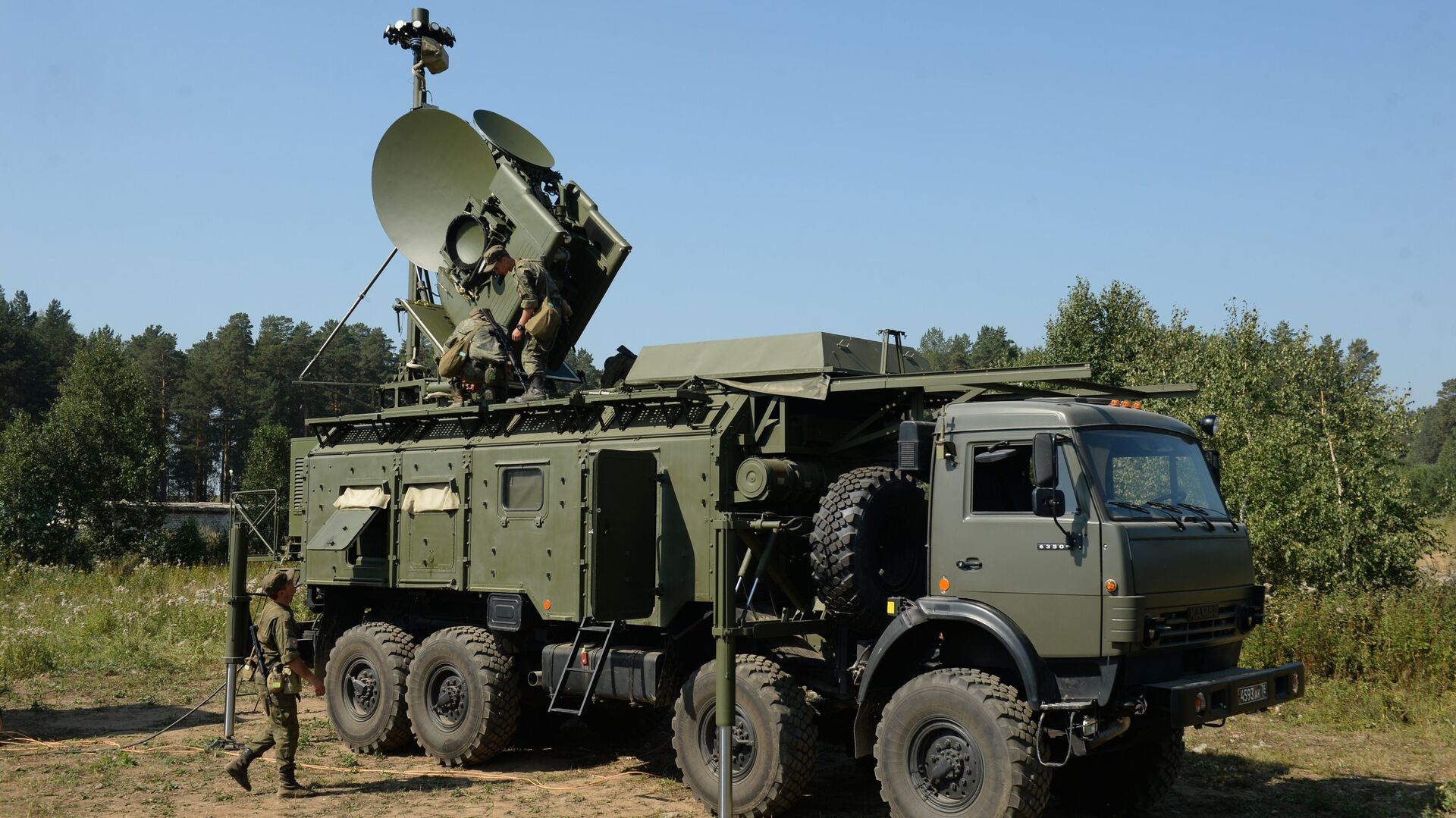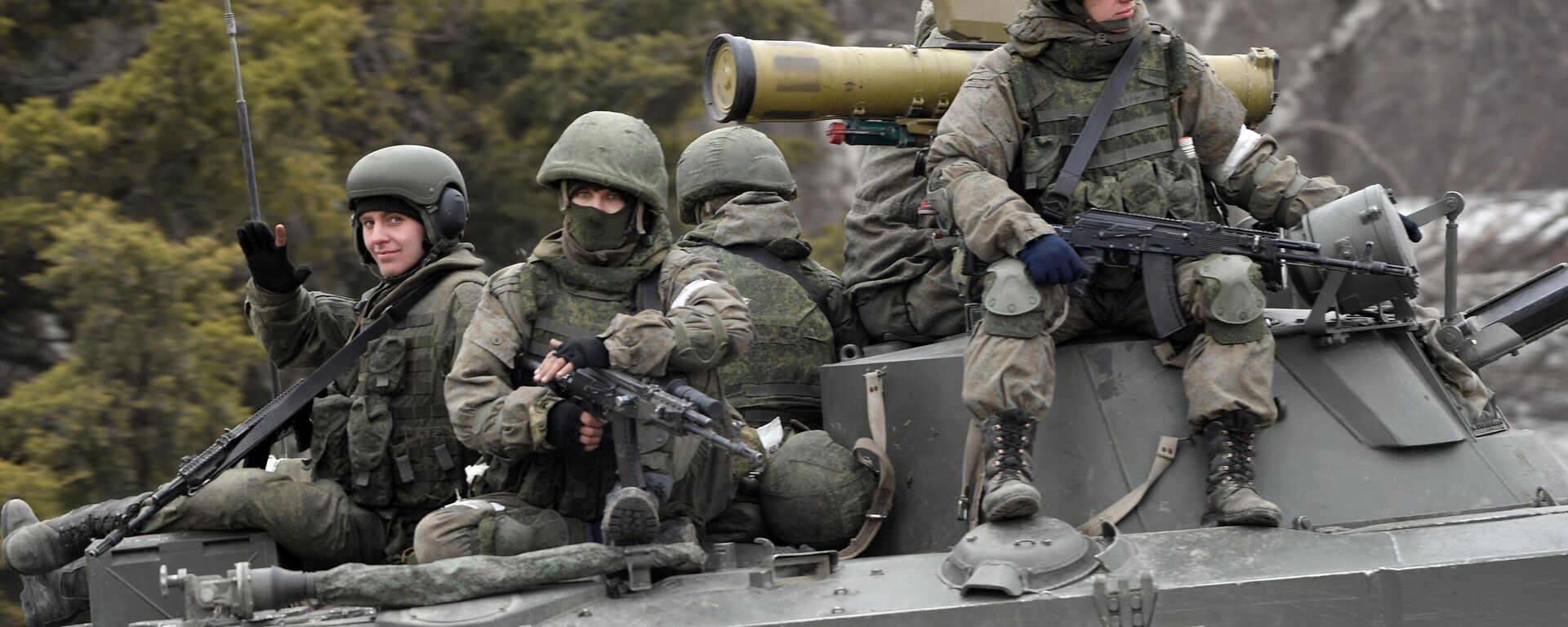https://sputnikglobe.com/20240525/how-russia-is-blinding-ukraines-long-range-nato-glide-bombs-1118633496.html
Russia is Blinding Ukraine’s Long-Range NATO Glide Bombs
Russia is Blinding Ukraine’s Long-Range NATO Glide Bombs
Sputnik International
The NATO-Russia proxy war in Ukraine has become a testing ground for a new generation of military technology for high-intensity warfare, with the split-second ability to jam an enemy drone, disorient a precision artillery munition or pinpoint a hidden enemy position using radio-electronic means often becoming the difference between life and death.
2024-05-25T15:11+0000
2024-05-25T15:11+0000
2024-05-25T15:11+0000
military
ukraine
russia
elon musk
military & intelligence
kiev
nato
reuters
pentagon
ground launched small diameter bombs (glsdb)
https://cdn1.img.sputnikglobe.com/img/105357/53/1053575370_0:160:3076:1890_1920x0_80_0_0_4ce55e6044669acb5530c0a7c312c550.jpg
Ukraine’s stocks of American-made Ground-Launched Small Diameter Bomb (GLSDB) munitions are being jammed by Russian electronic warfare equipment, three informed sources familiar with the ‘problem’ told Reuters.The Boeing/Saab Group-developed GLSDB is a ground-launched variant of Boeing’s GBU-39 Small Diameter Bomb – a 129 kg glide munition with a 93 kg fragmentation warhead and a 150 km range designed for strikes against heavily entrenched targets. The GLSDB can be fired from M270 and M142 HIMARS precision multiple launch rocket installations - which the United States began delivering to Ukraine in mid-2022, and which Russian forces initially had difficulties locating due to the systems’ rapid shoot-and-scoot [the ability to come out of cover, quickly fire and go back into hiding] capabilities.GLSDBs began to be sent to Ukraine in early 2024 in a bid by the Pentagon to extend Ukraine’s long-range strike potential, which Kiev has used to target both military and civilian targets in the Donbass and elsewhere.The GLSDB is just one of the systems Ukraine’s NATO-backed forces have faced problems with thanks to Russian electronic warfare measures. Daniel Patt, a senior fellow at the Hudson Institute, told Congress in March that the effectiveness of US 155 mm GPS-guided Excalibur artillery shells had dropped from 70 percent to just six percent several weeks after being delivered to Kiev after Russian forces fine-tuned their electronic warfare equipment against them.The bad news for the Pentagon regarding the GLSDB’s performance against a peer adversary comes on the heels of a New York Times report this week citing Ukrainian officials, electronic warfare specialists and frontline troops indicating that Russian electronic warfare had successfully jammed SpaceX’s Starlink satellite internet terminals en masse in Kharkov region. This, the sources said, helped Russia achieve an element of surprise for its offensive in the area to establish a “sanitary zone” free of Ukrainian long-range strike systems, which Ukraine’s forces had been using this spring to target the city of Belgorod and border settlements.SpaceX CEO Elon Musk confirmed in an X post Friday that his company has been forced to spend “significant resources combating Russian jamming efforts,” and characterized Russia’s electronic warfare capabilities as “a tough problem.”Russia has been forced to dramatically strengthen its electronic warfare capabilities amid the Ukrainian crisis, owing to the use of precision-guided NATO munitions and drones on a previously unparalleled scale. This has included everything from the jamming of guided artillery shells and extended-range Joint Direct Attack Munition (JDAM) kits, to confusing long-range drones and disorienting missiles. Russia’s military is also doing its best to stay ahead of the curve on the battlefield, with an informed source telling Sputnik last October that EW troops were tweaking their equipment to prepare to suppress Ukraine’s F-16s once they begin arriving later this year.Russia’s commitment to powerful electronic warfare capabilities dates back to the second half of the 20th century, when, amid preparations for a possible large-scale conflagration with NATO in the heart of Germany, Soviet military doctrines began emphasizing the need for “total integration of electronic warfare and physical destruction resources” on the battlefield. These developments have been consistently expanded and improved upon over the decades – with Russia, unlike the US, never losing focus on the creation of electronic warfare means against peer competitors.
https://sputnikglobe.com/20240314/russias-precision-guided-glide-munition-a-killer-headache-for-ukraine---report-1117322717.html
https://sputnikglobe.com/20240524/russia-muting-musks-starlink-satellites-using-sophisticated-electronic-warfare-tools-1118614899.html
https://sputnikglobe.com/20240519/ukraine-conflict-reveals-russian-supremacy-in-high-tech-warfare-of-the-future-1118524676.html
ukraine
russia
kiev
Sputnik International
feedback@sputniknews.com
+74956456601
MIA „Rossiya Segodnya“
2024
News
en_EN
Sputnik International
feedback@sputniknews.com
+74956456601
MIA „Rossiya Segodnya“
Sputnik International
feedback@sputniknews.com
+74956456601
MIA „Rossiya Segodnya“
how is russia disarming ukraine's nato weapons, can russia jam nato equipment, can russia jam nato weapons
how is russia disarming ukraine's nato weapons, can russia jam nato equipment, can russia jam nato weapons
Russia is Blinding Ukraine’s Long-Range NATO Glide Bombs
The NATO-Russia proxy war in Ukraine has become a testing ground for a new generation of military technology for high-intensity warfare, with the split-second ability to jam an enemy drone, disorient a precision artillery munition or pinpoint a hidden enemy position using radio-electronic means often becoming the difference between life and death.
Ukraine’s stocks of American-made Ground-Launched Small Diameter Bomb (GLSDB) munitions are being jammed by Russian electronic warfare equipment, three informed sources familiar with the ‘problem’ told Reuters.
The Boeing/Saab Group-developed GLSDB is a ground-launched variant of Boeing’s GBU-39 Small Diameter Bomb – a 129 kg glide munition with a 93 kg fragmentation warhead and a 150 km range designed for strikes against heavily entrenched targets. The GLSDB can be fired from M270 and M142 HIMARS precision multiple launch rocket installations - which the United States began delivering to Ukraine in mid-2022, and which Russian forces initially had difficulties locating due to the systems’ rapid shoot-and-scoot [the ability to come out of cover, quickly fire and go back into hiding] capabilities.
GLSDBs began to be sent to Ukraine in early 2024 in a bid by the Pentagon to extend Ukraine’s long-range strike potential, which Kiev has used to target both military and civilian targets in the Donbass and elsewhere.
Reuters’ sources said Russian jamming equipment has been targeting the GLSDB’s GPS-supported inertial navigation system, dramatically reducing its effectiveness. One of the sources said it would take Boeing “months” to fix the problem. The report did not provide details on what percentage of the long-range weapons had rendered useless by Russian efforts.
The GLSDB is just one of the systems Ukraine’s NATO-backed forces have faced problems with thanks to Russian electronic warfare measures. Daniel Patt, a senior fellow at the Hudson Institute, told Congress in March that the effectiveness of US 155 mm GPS-guided Excalibur artillery shells had dropped from 70 percent to just six percent several weeks after being delivered to Kiev after Russian forces fine-tuned their electronic warfare equipment against them.
The bad news for the Pentagon regarding the GLSDB’s performance against a peer adversary comes on the heels of a New York Times
report this week citing Ukrainian officials, electronic warfare specialists and frontline troops indicating that Russian electronic warfare had successfully jammed SpaceX’s Starlink satellite internet terminals en masse in Kharkov region. This, the sources said, helped Russia achieve an element of surprise for its offensive in the area to establish a “sanitary zone” free of Ukrainian long-range strike systems, which Ukraine’s forces had been using this spring to target the city of Belgorod and border settlements.
“We’re losing the electronic warfare fight,” a deputy commander from the Ukrainian 92ndAssault Brigade’s drone battalion said. “One day before the attacks, it just shut down. It became super, super slow.”
SpaceX CEO Elon Musk
confirmed in an X post Friday that his company has been forced to spend “significant resources combating Russian jamming efforts,” and characterized Russia’s electronic warfare capabilities as “a tough problem.”
Russia has been forced to dramatically strengthen its electronic warfare capabilities amid the Ukrainian crisis, owing to the use of precision-guided NATO munitions and drones on a previously unparalleled scale. This has included everything from the
jamming of guided artillery shells and extended-range Joint Direct Attack Munition (JDAM) kits, to
confusing long-range drones and
disorienting missiles. Russia’s military is also doing its best to stay ahead of the curve on the battlefield, with an informed source telling Sputnik last October that EW troops were tweaking their equipment to prepare to suppress Ukraine’s F-16s once they begin arriving later this year.
Russia’s commitment to powerful electronic warfare capabilities dates back to the second half of the 20th century, when, amid preparations for a possible large-scale conflagration with NATO in the heart of Germany, Soviet military doctrines began emphasizing the need for “total integration of electronic warfare and physical destruction resources” on the battlefield. These developments have been consistently expanded and improved upon over the decades – with Russia, unlike the US,
never losing focus on the creation of electronic warfare means against peer competitors.





